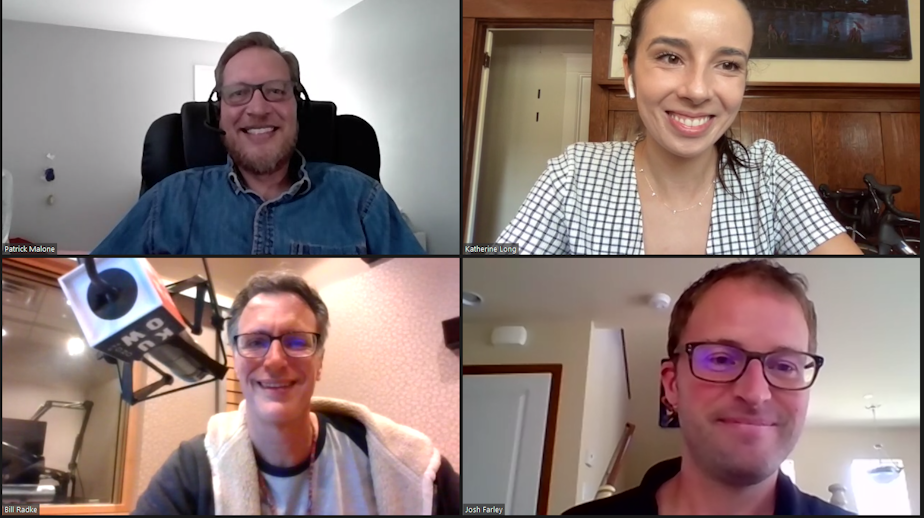Week in Review: The Mayor, overtime, and large concrete blocks

Bill Radke discusses the week’s news with Insider’s Katherine Long, Seattle Times’ Patrick Malone, and Kitsap Sun’s Josh Farley.
Seattle Mayor Bruce Harrell was doing damage control this week after criticizing the King County Regional Homelessness Authority, allegedly saying that nobody “has a right to sleep on a sidewalk” during a meeting with the Seattle Police Department. He also allegedly said that he would work against “inexperienced” City Council members in next year’s elections. What does that tell us about his plans for the city?
The Seattle Times reported this week that since mid-2021, Seattle’s jail has seen a suicide rate that is exceeding the national average. Isolation during COVID and length of stay have been suggested as some of the possible reasons for this. Why is Seattle’s jail suicide rate higher than other places?
The Seattle Fire Department paid out the most overtime in the department’s history last year, to the tune of $37.7 million. That is a 49 percent increase compared to 2019. THE SFD sits staffing shortages for excessive overtime. What’s being done about it?
Large concrete blocks have been seen taking up stretches of public parking illegally. These so called “eco” blocks are placed anonymously and are intended to keep people who live in their vehicle from parking there for extended periods of time. Now that the city is enforcing parking rules again, are they moving on RVs? And does that mean the city will now fine eco-block users?
The head of Microsoft for Startups (a program designed to get startup companies to use Microsoft products) Jeff Ma is leaving the company after being accused of treating women unfairly. This comes just months after Alex Kipman, the co-creator of Microsoft HoloLens, resigned when allegations were made that he behaved inappropriately towards women employees. Does Microsoft seem any more or less serious about acting on sexual misconduct allegations than other tech companies?
Sponsored
A white powdery mildew is showing up on bigleaf maple trees on the Kitsap Peninsula and elsewhere. While scientists are trying to figure out what long term consequences there might be, and how bad it can get, they say at the very least it is robbing the host plant from nutrients, water and sugar. It is also uncertain how it is spreading so fast.


